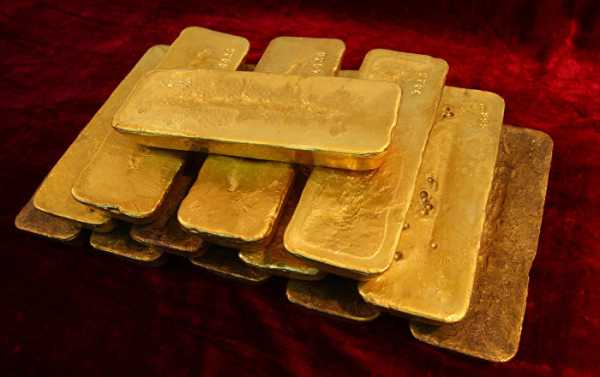
June figures from the Russian Central Bank show that Moscow added 106 tons of gold to its nearly 2,000-ton stockpile in the first six months of 2018, with the country dumping much of its US bond holdings in the process. But does Russia rely on other countries to store its precious metal, or is it safe and sound at home? Sputnik found the answer.
Russia’s gold reserves rose to 1,944 tons as of June 2018, up from less than 500 tons just a decade ago. The holdings, amounting to over 17 percent of Russia’s total foreign reserves, were shored up in part by offloading some $77 billion worth worth of its US Treasury bills, bonds and notes over the last six months or so.
In recent years, the central banks of a number of countries have rejected the long-accepted practice of keeping their gold abroad. Most recently, the Turkish Central Bank began withdrawing its gold from the US Federal Reserve and shipping it back to Ankara at an accelerated pace. Before that, the Netherlands, Germany, Austria, and Venezuela made similar moves, repatriating all or part of their physical gold reserves from New York or other Western Central Banks. Hungary and Belgium have also mulled bringing their gold home for safekeeping.
Gold repatriation operations have not been without their difficulties. In 2013, when Germany began the repatriation of its gold from the US, so-called “logistical difficulties” saw just five tons of some 300 brought home that year, giving rise to theories that the US was holding up the process. When the Dutch Central Bank launched their repatriation program, they did so on the sly, shaving their Fed gold holdings by 122.5 tons in 2014 and only announcing that they did so after the fact. Turkish President Recep Tayyip Erdogan, perhaps sensing problems with Turkey’s repatriation efforts, proposed ditching dollar loans in favor of loans “based on gold” at the recent G20 meeting in April.
Russia won’t face any headaches in repatriating any gold because its reserves are already held in the country. Nearly two-thirds of Russia’s stocks of the precious metal are held at the Central Bank’s repository in Moscow, shrouded in secrecy until recently. In 2017, a Komsomolskaya Pravda journalist became the first to get a glimpse of the Moscow storage facility, with rows and rows of containers with 20 gold bars between 12 and 13 kilograms apiece shown in a 17,000-square-meter warehouse.
Russia’s gold reserves. The Central Bank’s Central Gold Depository.
The rest of Russia’s gold is stored in St. Petersburg, and the city of Ekaterinburg in the Russian Urals.
Russia made it into the top five gold-holding nations in February 2018; if the current acquisition trend continues, the country should expect to reach the top three in the near future; over the long term, the country could top the Soviet-era record of 2,800 metric tons of gold in 1941.
Russia is one of the world’s top gold producers. Over two-thirds of Russia’s gold is mined in the Far Eastern and Siberian regions of Amur, Khabarovsk, Magadan, Irkutsk, Krasnoyarsk and Yakutia; much of the rest is mined in the Urals, Karelia and Murmansk. At present, geologists estimate that Russia has about 12,500 tons of recoverable gold that’s yet to be mined.
Sourse: sputniknews.com






